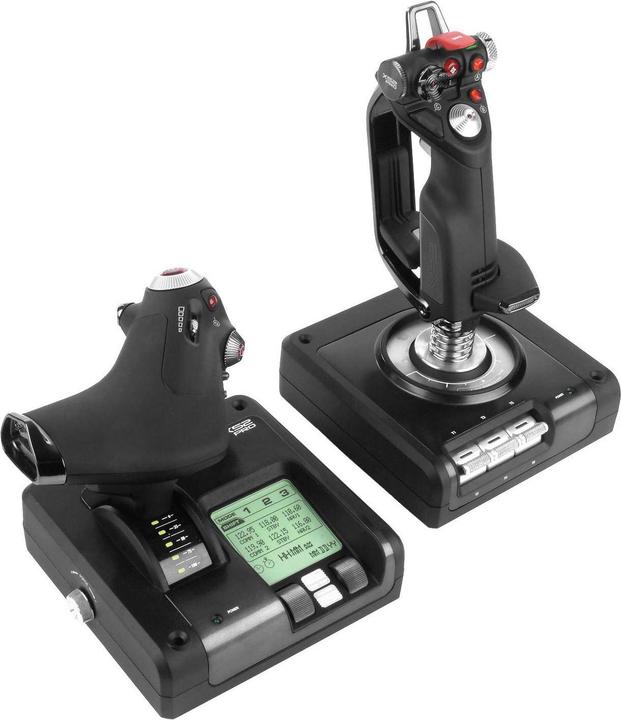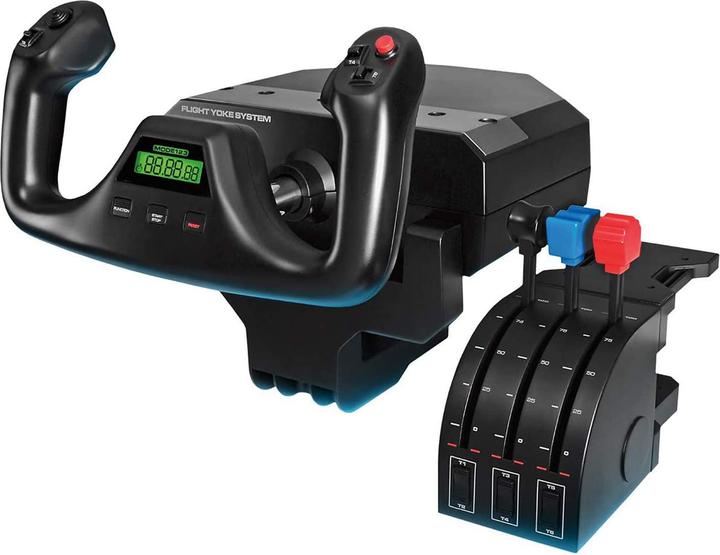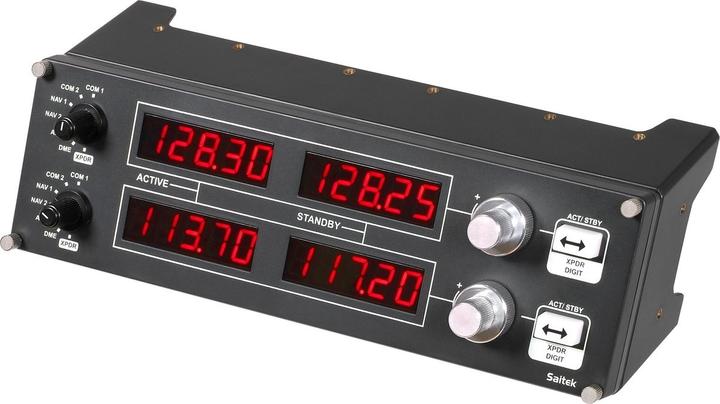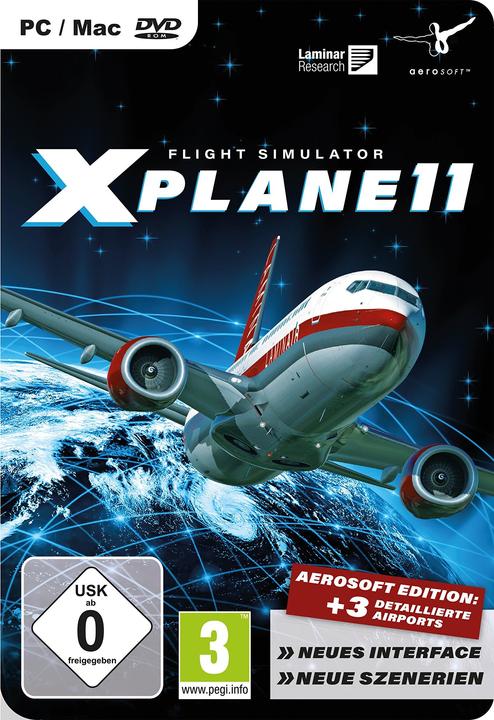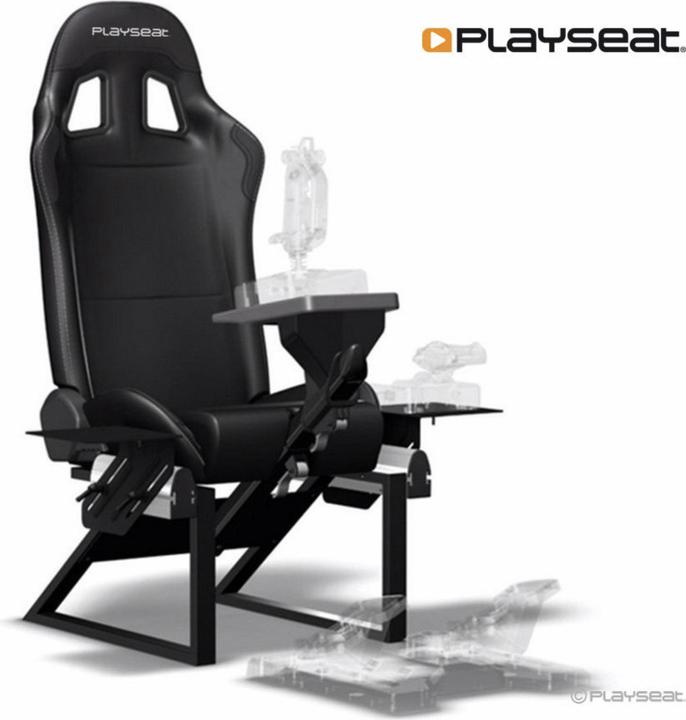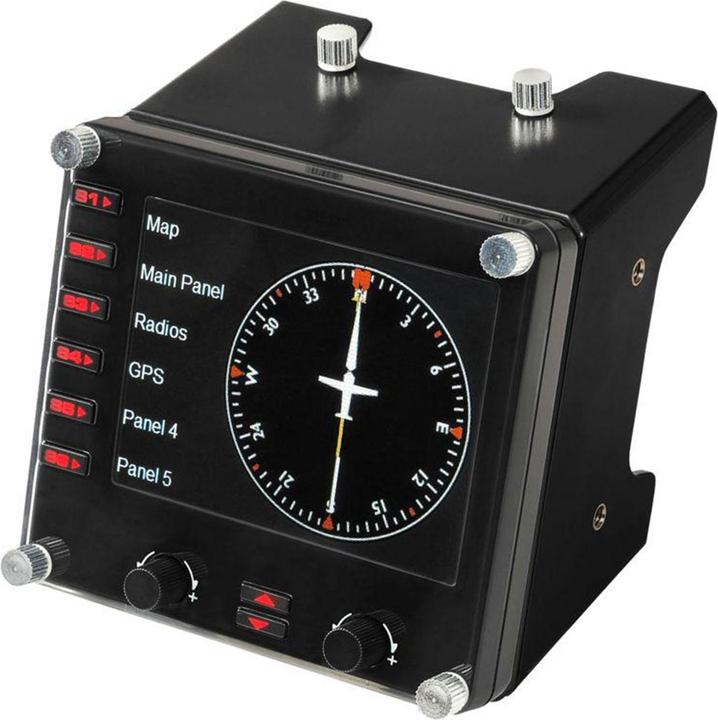
What a pilot thought of our luxury flight simulator
As Opel famously said, only flying is better. Sadly, we don’t have wings and few of us are pilots. But the good news is you can now get your hands on flight simulators. We put together top of the range equipment and invited a pilot to test it out. Was it up to scratch and could we learn to fly with it?
Admittedly, flight simulators aren’t as popular as they used to be. For diehard hobbyist pilots, there are still plenty of ways you can take off from home. Obviously, you get the best experience when you have a big setup. Logitech kindly gave us a whole host of equipment so we could get the most out of the simulator. Given that, you may wonder why we list Saitek equipment. This is for the simple reason that the Swiss peripheral manufacturer Logitech merged with joystick maker Saitek a year ago. As a result, Logitech’s own range expanded.
Our setup combined
Our flight simulator game of choice was
...on this bad boy

Digitec Zenon ZX - powered by Joule Performance
500 GB, 16 GB, Intel Core i7-7700K, GeForce GTX 1080 Ti
...with three of these monitors
We headed off to the basement to build our setup and get ready for lift off in peace and quiet. As none of us had a clue about flight simulators let alone flying, we called in an expert. Christian W. is a qualified pilot with over 500 flight hours under his belt. He used to game with flight simulators a lot and he used a number of real flight simulators during his training.
The first hands-on test
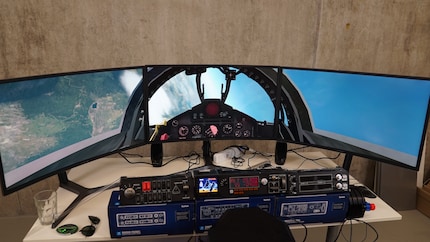
The first thing Christian said when he sat down was, “erm, a F4”, with a mischievous grin. He was referring to the fighter jet Phantom F4, which is one of the many planes you can choose from. Slowly, he got to work and opted for an unassuming Cessna. With his experienced eye, he could tell straightaway that our setup was the same as that of a single motor. Saitek has a wide variety of equipment you can use to realistically recreate flying different planes. Even our equipment gives you this freedom. Specific control elements then aren’t available and have to be managed digitally.
The first take-off didn’t go as planned. Some of the levers didn’t react. Although the propeller did spin around cheerfully, the plane didn’t move from the spot. We then started troubleshooting. That meant Christian did all the work and I looked on blankly at all the notifications appearing on the screen. It was just as well he could make sense of the numerous switches and displays that for once weren’t just for decoration. “You have to turn the little wheel,” said Sandro, our digital marketing whizz, who was also in charge of camera duties that day. “I know how it works,” replied Christian determinedly. Rebooting the levels resolved the problem. It was probably a configuration error. Not long after that, Christian took off from the Bernese airport of Belp. But before he could do that, we coerced him into radioing the tower with the integrated communication device. Although the whole thing was pointless because the computer couldn’t reply given we played offline, we still got excited about what sounded to me like incomprehensible pilot gibberish.
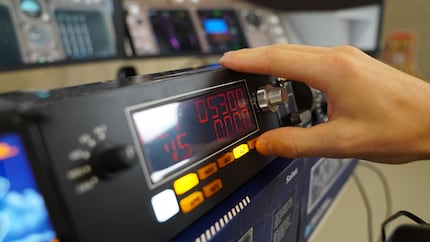
As we had to reduce the game details somewhat to keep it running fairly smoothly on the three monitors (5760x1080 pixels), navigation from the sky was slightly more difficult. “I’d love to fly back but the terrain doesn’t look at all like I remember. Isn’t there a satnav?” Of course there is, but pilots don’t reach for Google Maps like the rest of us. Instead, they use coordinates to find their way.
Can you learn to fly using a flight simulator?
While Christian headed for Belp with the help of the satnav, I asked him whether you can learn to fly a plane by practicing on a flight simulator like this one. “Just because you can fly the plane OK in a simulator doesn’t mean you could do the same in real life.” He explained that the layout in most planes is similar and altimeter, compass and so on are usually all in the same place. Christian reckoned we’d probably be able to find our way around the cockpit if we spent hundreds of hours with the simulator. But I wanted more specific information. “Imagine this scene: Both the pilot and copilot have a heart attack and the other people in the cockpit are down as well – a kind of heart attack epidemic, as it were. The stewardess would come running into the cabin, desperately looking for a pilot. Would I be allowed to land the plane?”. “It would all come down to safety,” said Christian. He thought I’d certainly be more likely to than people who had no idea about planes. But he explained that in reality, there would be a number of other factors that would still make landing rather dangerous. And landing is known to be the most difficult part. “That’s not entirely right,” Christian corrected me quickly. Taking off apparently carries more risks. “When you’re landing, you just have to get the right place. But when it comes to taking off, you can get engine failure, and then you really are in a pickle.” I made a mental note to think about that the next time I fly.
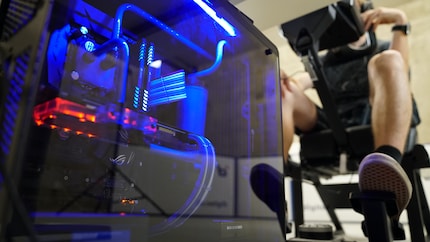
To run a game on three monitors, you need a fair bit of oomph.
The small Bernese airport finally came into view. Christian landed and brought the Cessna to a standstill in its parking place. He seemed pleased with himself but not with the simulator. “I flew too fast,” he said. Christian put this down to the fact he could only rely on instruments and not his gut feeling. At least he didn’t crash like I did the first time I tried the simulator. But that was only because I couldn’t find the brakes!
“What do you mean you can’t fire off the rockets?”
After his flight in the trusty Cessna on Sunday and then a quick jaunt in the Boeing 747, Christian moved things up a gear. “Put on the F4,” he insisted. This meant we had to swap the steering wheel and lever for a lovely HOTAS flight stick. HOTAS stands for Hands On Throttle-And-Stick and is a two-piece steering concept that is used in most modern planes.
Ambitious flight simulator gamers who don’t want to build a whole simulator at home swear by HOTAS. In fact, it’s also a great controller for the Phantom F4.
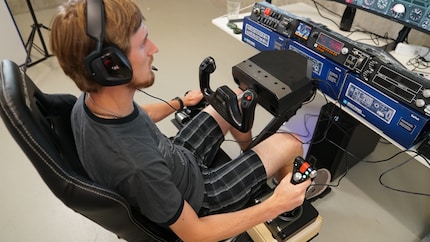
“Load two more AMRAAM guided missiles so the F4 looks even better”, instructed Christian. I instantly wanted to argue that two weren’t enough, but I realised just in time that real fighter jets probably don’t have space for 50 rockets. Maybe I spend too much time gaming...
Armed with his ammunition-heavy F4, Christian chose the Meiringen airbase as his starting point. Before he could get started, we had to do a bit of fine-tuning to make sure all the keys and levers were assigned. Then it was time for lift-off, using the broad thrust lever. But the fighter jet was so sensitive to steering that Christian didn’t appear to enjoy the experience. The equipment needed more tuning, but we didn’t feel like going back to square one. However, Christian did point out that the plane flew so smoothly and the HOTAS felt more bulky and therefore more real than the last one.
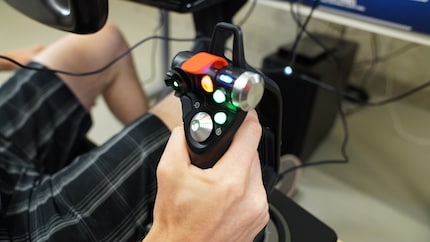
“Aren’t you at least going to press the red button once to fire up the rockets?” I piped up. “We can’t.” “What do you mean we can’t?” Christian explained that X-Plane 11 only has dummies. He went on to say that, in any case, an AMRAAM is a guided missile and not a rocket. Far from putting me off, this just made me more intrigued.
The difference between a flight simulator and flying
How does our flight simulator fare compare to flying a plane? “When it comes to flying for real using a control rod, control pressures increase at higher speeds. This is why you can’t move the joystick nearly as easily as this one here,” explained Christian. If the plane has Fly-by-Wire, the control surfaces are accessed hydraulically. This roughly translates as power steering. But even then, there is artificial force feedback, because this feeling is so important. As a result, simulator control also has to be fitted with force feedback to make the whole thing more realistic. According to Christian, you wouldn’t feel the plane without this. He explained feedback is also good for practicing blind flying and procedure (process operations). “When you’re flying, you feel turbulence, engine speed, where you are and so on with your behind. That’s the difference.”
Radio signals can’t be underestimated. “When you’re in the cockpit, you hear a constant chatter over the radio and you have to listen because it might be relevant to you.” In that instance you would have to reply, Christian explained. Another difference between a flight simulator and flying is that real flight simulators replicate one particular plane. When you use your simulator at home, you normally build a mishmash of different models so that you can fly a wide variety of planes.
One key advantage Christian noticed was “when you’ve had enough, you can just get out. And once you land you don’t have any red tape waiting for you.”
To buy or not to buy: that is the question
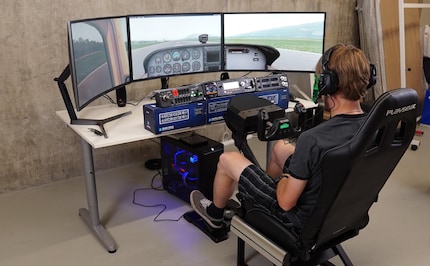
“When I was little, I would have been so excited about a game like this. Nowadays, though, I prefer the real deal. Gaming simulators just lack that certain something.” However, if he were to have a setup like this at home, the first thing he would do is change the plastic joystick. The pedals, on the other hand, felt realistic. He even got something out of using the HOTAS. “I had the best flying experience with the Cessna. The F4 was a complete flop. There was something we hadn’t set right.” Christian said he would rather spend his money on other things and keep using his old joystick and the flight simulator games he currently owns. While he admitted “three monitors are pretty cool”, he did find them a bit awkward. However, there was one part of our setup he did like. “Can I keep the chair? It is so comfortable.” Such praise for something that was a racing chair and not even meant for flight simulators.
If you aren’t put off by cost or fine-tuning, Saitek flight simulator equipment is perfect for building your own personal cockpit. You can’t simulate the whole flying experience, but you won’t get any closer to the real thing. Unless you get a pilot licence, of course.
You may find the following interesting (in German):
As a child, I wasn't allowed to have any consoles. It was only with the arrival of the family's 486 PC that the magical world of gaming opened up to me. Today, I'm overcompensating accordingly. Only a lack of time and money prevents me from trying out every game there is and decorating my shelf with rare retro consoles.
From the latest iPhone to the return of 80s fashion. The editorial team will help you make sense of it all.
Show all
